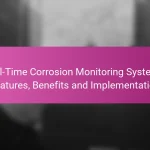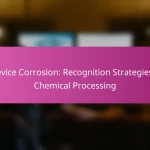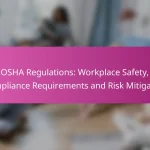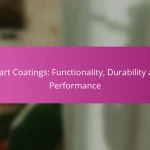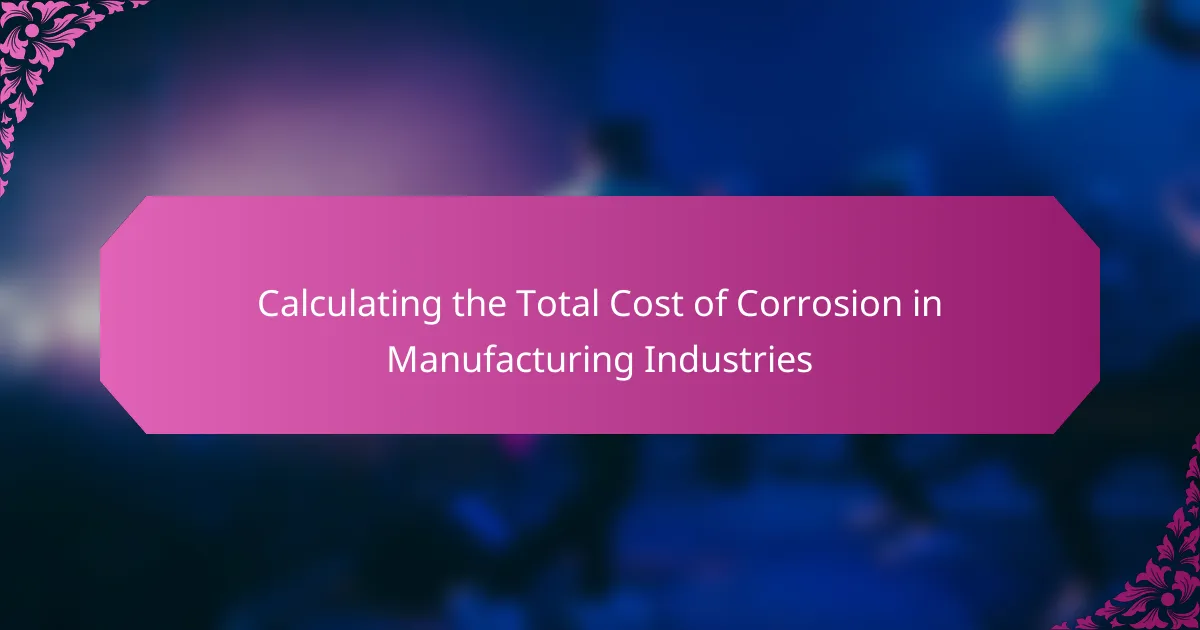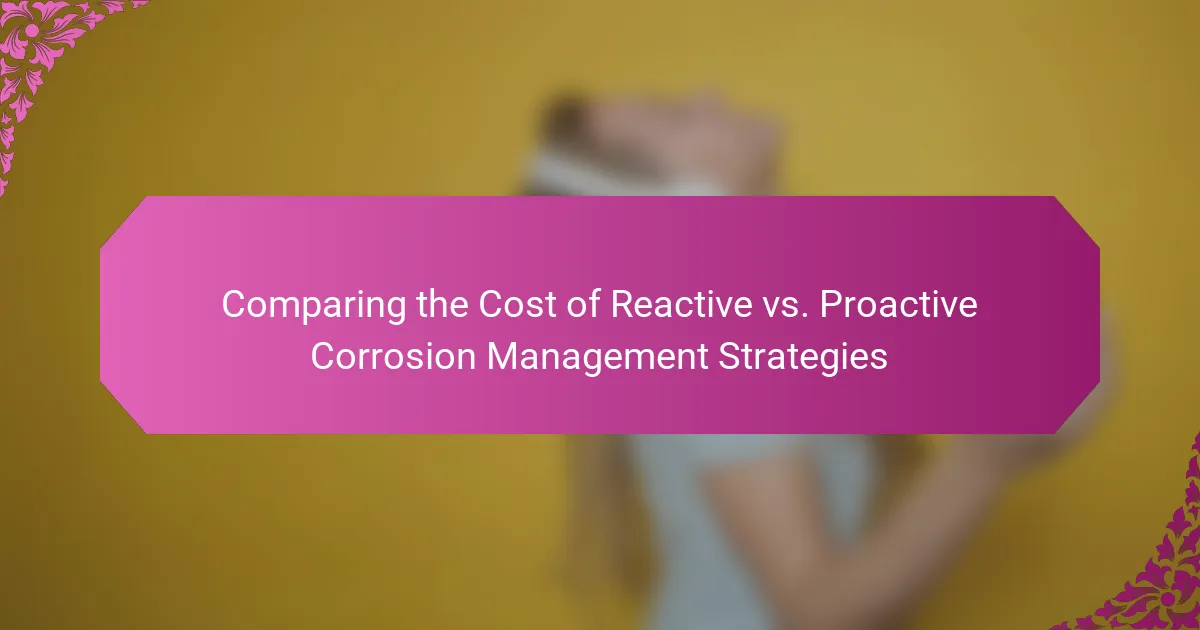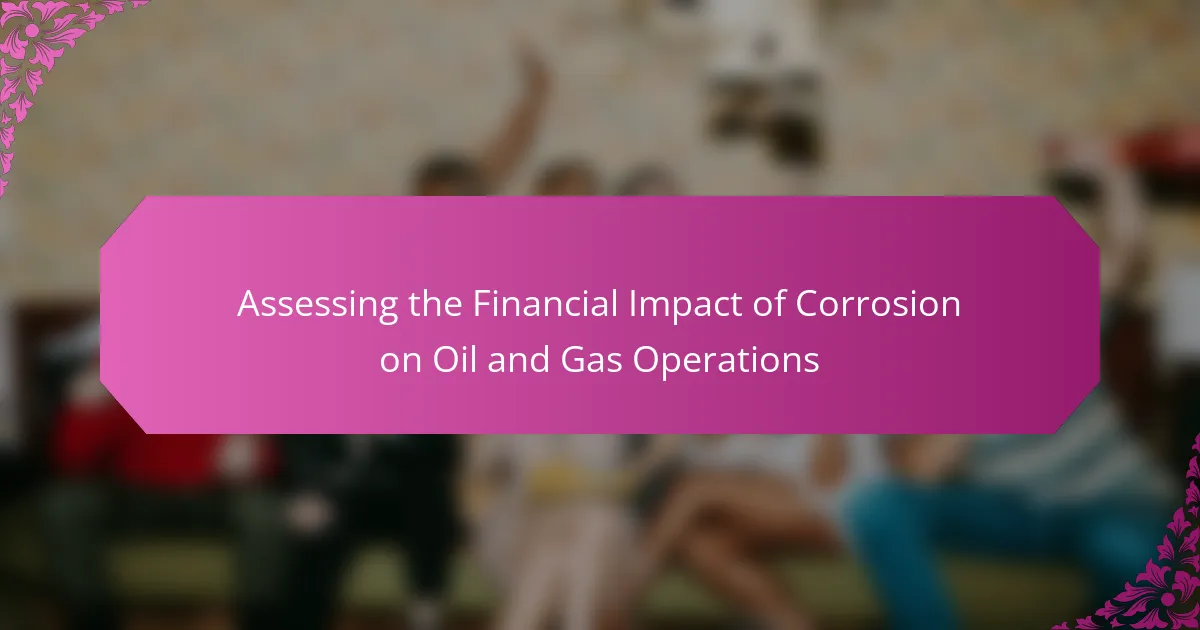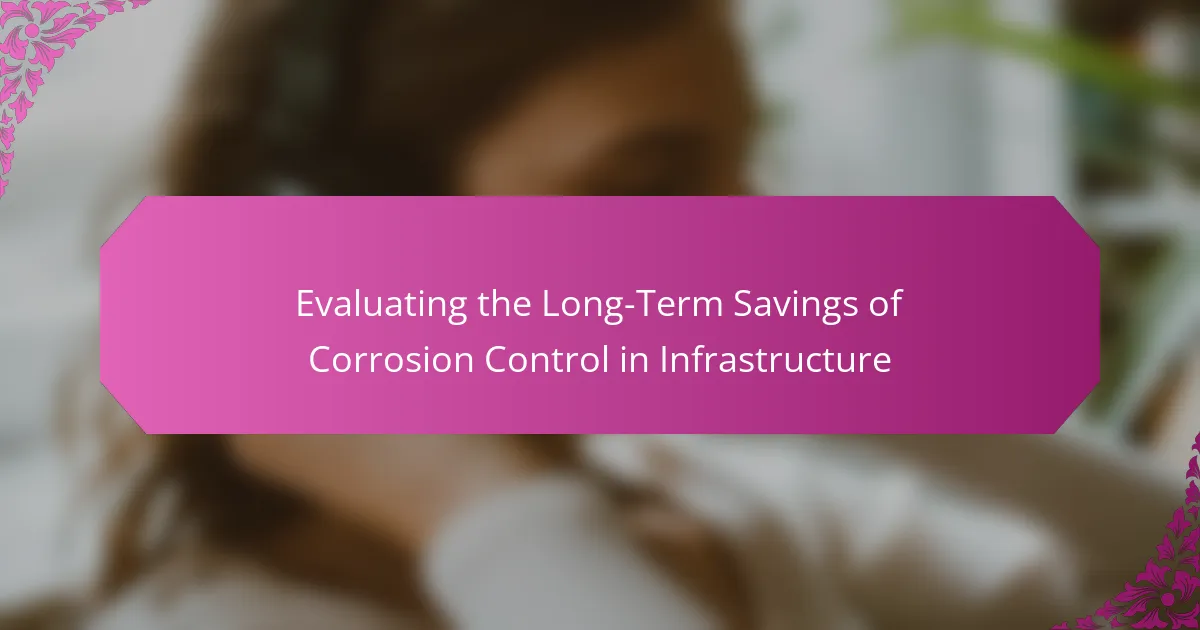The total cost of corrosion in manufacturing industries is a critical factor that can greatly influence both financial performance and operational efficiency. By evaluating direct and indirect expenses related to material degradation, companies can identify significant costs associated with repairs, replacements, and lost production. Implementing effective corrosion management strategies is essential for minimizing these costs and enhancing the longevity of manufacturing assets.

What are the costs associated with corrosion in manufacturing industries?
The costs associated with corrosion in manufacturing industries can be significant, impacting both financial performance and operational efficiency. These costs can be categorized into direct and indirect expenses, as well as long-term financial implications that affect overall profitability.
Direct costs of corrosion
Direct costs of corrosion include expenses related to the repair and replacement of corroded materials and equipment. These costs can encompass labor, materials, and downtime incurred during maintenance activities. For instance, industries may spend millions annually on corrosion-related repairs, particularly in sectors like oil and gas or manufacturing where equipment is exposed to harsh environments.
Additionally, companies often invest in protective coatings and corrosion inhibitors to mitigate these direct costs. While these preventive measures require upfront investment, they can lead to significant savings over time by extending the lifespan of equipment and reducing maintenance frequency.
Indirect costs of corrosion
Indirect costs of corrosion are less visible but can be equally damaging to a company’s bottom line. These costs include lost production due to equipment failure, which can lead to missed deadlines and dissatisfied customers. For example, a manufacturing plant experiencing frequent equipment failures may face delays that result in lost contracts or penalties.
Moreover, corrosion can impact safety, leading to potential accidents and associated liabilities. Companies may incur legal fees, insurance costs, and regulatory fines if corrosion-related failures cause injuries or environmental damage. Thus, addressing corrosion proactively can help mitigate these indirect costs significantly.
Long-term financial impact
The long-term financial impact of corrosion extends beyond immediate repair costs and can affect a company’s competitiveness. Persistent corrosion issues can lead to increased operational costs, reduced asset value, and higher insurance premiums. Over time, these factors can erode profit margins and hinder growth opportunities.
To manage the long-term financial impact, companies should implement comprehensive corrosion management strategies. This includes regular inspections, adopting corrosion-resistant materials, and investing in employee training on maintenance best practices. By prioritizing corrosion management, businesses can enhance their financial resilience and ensure sustainable operations.
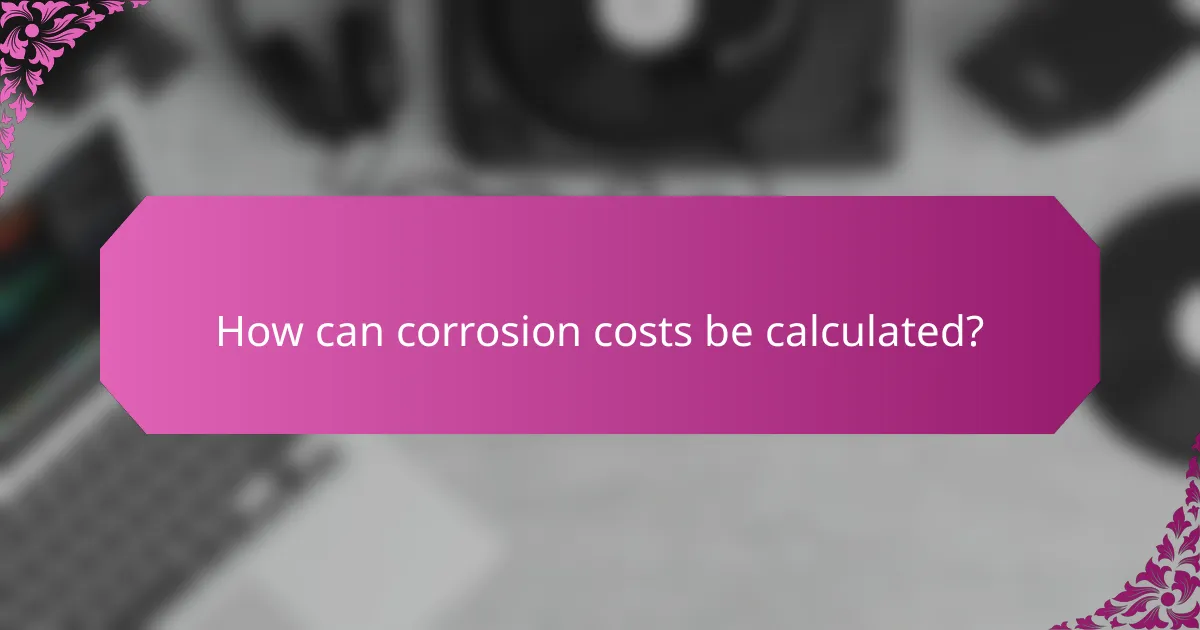
How can corrosion costs be calculated?
Corrosion costs in manufacturing can be calculated by assessing direct and indirect expenses associated with material degradation. This includes costs for repairs, replacements, lost production, and safety incidents, which can significantly impact overall profitability.
Cost estimation methods
Common methods for estimating corrosion costs include the direct cost approach, where expenses for maintenance and repairs are tallied, and the indirect cost approach, which considers lost revenue and productivity. A widely used framework is the Total Cost of Ownership (TCO), which encompasses all costs over a product’s lifecycle.
Another effective method is the use of industry benchmarks, which provide comparative data on corrosion costs across similar sectors. This can help manufacturers identify areas for improvement and set realistic cost reduction targets.
Data collection techniques
Effective data collection for corrosion costs involves both qualitative and quantitative methods. Surveys and interviews with maintenance teams can provide insights into recurring issues and their financial impact, while historical maintenance records can quantify direct costs.
Utilizing sensors and monitoring technology can also yield real-time data on corrosion rates, allowing for proactive maintenance strategies. This data can be analyzed to forecast future costs and optimize resource allocation.
Industry-specific calculations
Different industries face unique challenges in calculating corrosion costs. For example, the oil and gas sector may prioritize pipeline integrity, while the manufacturing industry might focus on equipment longevity. Each sector requires tailored approaches that consider specific materials, environmental factors, and regulatory standards.
In sectors like aerospace, where safety is paramount, the costs associated with corrosion can include not only repairs but also compliance with strict regulations. Understanding these nuances is crucial for accurate cost estimation and effective corrosion management strategies.
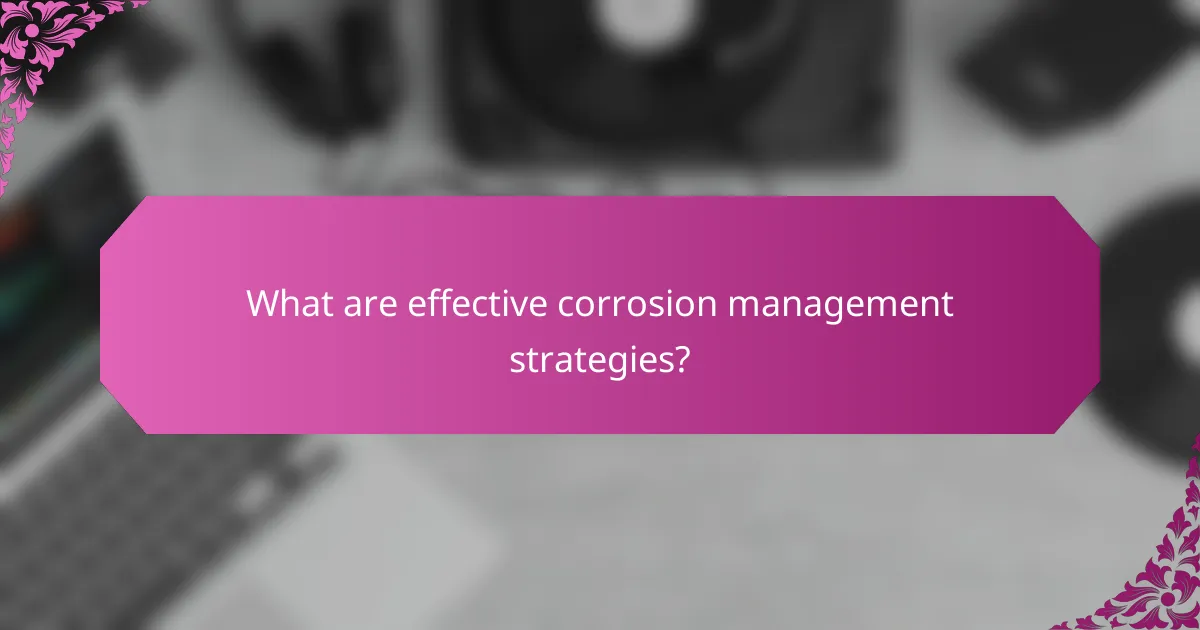
What are effective corrosion management strategies?
Effective corrosion management strategies focus on preventing and mitigating corrosion to reduce costs and extend the lifespan of manufacturing assets. These strategies involve a combination of maintenance practices, material selection, and protective measures tailored to specific environments and applications.
Preventive maintenance practices
Preventive maintenance practices are essential for identifying and addressing corrosion before it leads to significant damage. Regular inspections, monitoring, and maintenance schedules can help detect early signs of corrosion, allowing for timely interventions.
Implementing a routine maintenance checklist can ensure that critical components are assessed frequently. This may include checking for moisture accumulation, inspecting welds, and replacing worn-out parts. Adopting a predictive maintenance approach can further enhance these efforts by utilizing technology to forecast potential corrosion issues.
Corrosion-resistant materials
Using corrosion-resistant materials is a proactive strategy to combat corrosion in manufacturing. Materials such as stainless steel, aluminum alloys, and certain plastics are designed to withstand corrosive environments, reducing the likelihood of damage.
When selecting materials, consider the specific environmental conditions, such as exposure to chemicals, humidity, and temperature fluctuations. While corrosion-resistant materials may have a higher upfront cost, they often lead to lower long-term maintenance expenses and improved durability.
Protective coatings and treatments
Protective coatings and treatments serve as barriers between corrosive elements and the substrate material. Options include paints, galvanization, and specialized coatings that can significantly enhance resistance to corrosion.
Choosing the right coating involves evaluating factors such as the operating environment, expected lifespan, and application method. Regularly inspecting and maintaining these coatings is crucial, as any damage can compromise their effectiveness and lead to corrosion issues.

What role do regulations play in corrosion costs?
Regulations significantly influence corrosion costs in manufacturing by establishing compliance requirements that affect material selection, maintenance practices, and overall operational expenses. Adhering to these regulations can lead to increased costs but also offers benefits such as reduced long-term damage and improved safety.
Compliance costs
Compliance costs refer to the expenses incurred by manufacturers to meet regulatory standards related to corrosion prevention and control. These costs can include investments in specialized materials, protective coatings, and regular inspections, which can range from a few thousand to several million dollars depending on the scale of operations.
Manufacturers must budget for ongoing training and certification of personnel to ensure adherence to these regulations. Failing to comply can result in fines, legal liabilities, and increased maintenance costs due to accelerated corrosion, making it crucial to factor compliance into the overall cost of corrosion management.
Impact of industry standards
Industry standards play a critical role in shaping the practices that manufacturers adopt to combat corrosion. Standards such as ISO 12944 for protective coatings or ASTM G1 for corrosion testing provide guidelines that help companies minimize corrosion-related risks and costs.
By following these standards, manufacturers can enhance product longevity and reliability, ultimately reducing the total cost of ownership. Additionally, adherence to recognized standards can improve a company’s reputation and marketability, providing a competitive edge in industries where durability is paramount.

How does corrosion affect sustainability in manufacturing?
Corrosion significantly impacts sustainability in manufacturing by leading to material degradation, increased waste, and higher energy consumption. This not only affects the environment but also raises operational costs and reduces the lifespan of products.
Environmental implications
The environmental implications of corrosion in manufacturing are profound. Corroded materials often end up as waste, contributing to landfill overflow and pollution. Additionally, the processes to replace corroded components typically involve energy-intensive manufacturing, further increasing carbon emissions.
Manufacturers must consider the lifecycle of materials used in production. Choosing corrosion-resistant materials can minimize waste and reduce the need for frequent replacements, thus lowering environmental impact.
Resource efficiency
Corrosion affects resource efficiency by increasing the consumption of raw materials and energy. When equipment fails due to corrosion, it necessitates more frequent repairs or replacements, leading to higher resource use and costs.
To enhance resource efficiency, companies should implement regular maintenance schedules and invest in protective coatings or corrosion inhibitors. These practices can extend the life of equipment and reduce the overall demand for new materials, resulting in cost savings and improved sustainability.

What are emerging technologies in corrosion prevention?
Emerging technologies in corrosion prevention focus on innovative methods and materials to reduce corrosion-related damage in manufacturing. These advancements include smart sensors, advanced coatings, and automated monitoring systems that enhance the durability of assets and minimize maintenance costs.
Smart sensors for monitoring
Smart sensors for monitoring corrosion utilize advanced technology to detect and analyze corrosion in real-time. These sensors can be integrated into manufacturing equipment to provide continuous data on environmental conditions and material integrity, allowing for proactive maintenance and timely interventions.
These sensors often employ techniques such as electrochemical impedance spectroscopy or ultrasonic testing to assess corrosion levels. By providing instant feedback, they help manufacturers avoid costly downtime and extend the lifespan of their assets.
When implementing smart sensors, consider factors such as sensor placement, calibration, and data integration with existing systems. Regular maintenance of the sensors themselves is crucial to ensure accurate readings and reliable performance over time.
